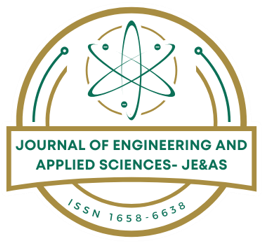| Original Research Online Published: 10 Mar 2020 Published online: 10 Mar 2020 | ||||||||||||||||||||||||||||||
Reliability of Using Curvature TechniquesinStructural Damage Detection Mohamed Abdel-basset Abdo.
| ||||||||||||||||||||||||||||||
| How to Cite this Article |
| Pubmed Style Mohamed Abdel-Basset Abdo. Reliability of Using Curvature TechniquesinStructural Damage Detection. Journal of Engineering and Applied Sciences. 2014; 1(1): 1-12. doi:10.12816/0004793 Web Style Mohamed Abdel-Basset Abdo. Reliability of Using Curvature TechniquesinStructural Damage Detection. https://jecasmu.org/?mno=91588 [Access: September 15, 2025]. doi:10.12816/0004793 AMA (American Medical Association) Style Mohamed Abdel-Basset Abdo. Reliability of Using Curvature TechniquesinStructural Damage Detection. Journal of Engineering and Applied Sciences. 2014; 1(1): 1-12. doi:10.12816/0004793 Vancouver/ICMJE Style Mohamed Abdel-Basset Abdo. Reliability of Using Curvature TechniquesinStructural Damage Detection. Journal of Engineering and Applied Sciences. (2014), [cited September 15, 2025]; 1(1): 1-12. doi:10.12816/0004793 Harvard Style Mohamed Abdel-Basset Abdo (2014) Reliability of Using Curvature TechniquesinStructural Damage Detection. Journal of Engineering and Applied Sciences, 1 (1), 1-12. doi:10.12816/0004793 Turabian Style Mohamed Abdel-Basset Abdo. 2014. Reliability of Using Curvature TechniquesinStructural Damage Detection. Journal of Engineering and Applied Sciences, 1 (1), 1-12. doi:10.12816/0004793 Chicago Style Mohamed Abdel-Basset Abdo. "Reliability of Using Curvature TechniquesinStructural Damage Detection." Journal of Engineering and Applied Sciences 1 (2014), 1-12. doi:10.12816/0004793 MLA (The Modern Language Association) Style Mohamed Abdel-Basset Abdo. "Reliability of Using Curvature TechniquesinStructural Damage Detection." Journal of Engineering and Applied Sciences 1.1 (2014), 1-12. Print. doi:10.12816/0004793 APA (American Psychological Association) Style Mohamed Abdel-Basset Abdo (2014) Reliability of Using Curvature TechniquesinStructural Damage Detection. Journal of Engineering and Applied Sciences, 1 (1), 1-12. doi:10.12816/0004793 |
 Submit Article
Submit Article - Author Login
- Reviewer Login
- About Publisher
- Peer Review Policy
- Author's Rights and Obligations
- Publication Ethics and Publication Malpractice Statement
- Conflict of Interest Policy
- Plagiarism Policy
- Protection of Research Participants (Statement On Human And Animal Rights)
- Privacy Policy
- Corrections, Retractions & Expressions of Concern
- Self-Archiving Policies
- Statement of Informed Consent
- Terms of Use
- License Information
- Copyright Information
- Statement on the Use of Generative AI
- ISSN: 1658-6638 (print)
- ISSN: 1658-7073 (electronic)

